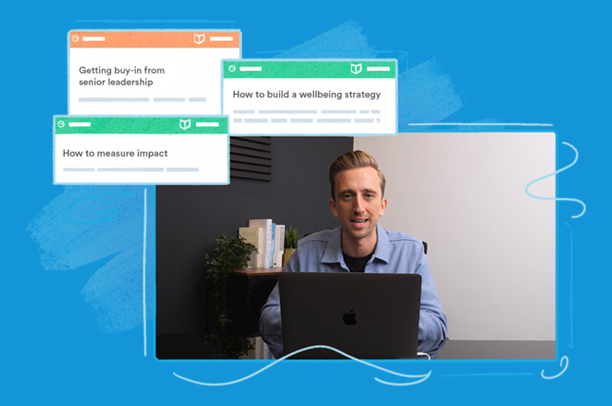Every year on the 10th of September, organisations around the world get together to raise awareness about suicide prevention for World Suicide Prevention Day.
This awareness day is a cause close to our hearts at Everymind at Work, as suicide is a key part of our Founder’s story and the driving force behind our mission. However, we truly believe that employers play a large part in the prevention of suicide all year round.
Therefore, as World Suicide Prevention Day approaches, we wanted to highlight to employers, the importance of including suicide prevention in their wellbeing strategy.
Some stats around suicide:
- Over 700,000 people take their life every year1, that’s one person every 40 seconds
- When someone dies by suicide, 135 people are affected2. The effects of suicide bereavement are wide-ranging, including high levels of stress, depression, anxiety and physical health difficulties
- An individual is 65% more likely to make a suicide attempt if they are bereaved by suicide3
- 115 people die by suicide in the UK every week – with 75% of those deaths being male4
- 1 in 15 people attempt suicide in their lifetime5
Why is it important to include suicide prevention in your wellbeing strategy?
Suicide doesn’t discriminate.
The statistics above highlight the prevalence of suicide. When we consider these figures in relation to an organisation’s employees, it is likely that many employees have been impacted by suicide in some way. It is therefore important to take action and support suicide prevention in the workplace.
Moreover, research has found that 1 in 5 people have suicidal thoughts (NHS Digital), which again could be a large proportion of an organisation. Whilst you may not know exactly who these employees are, it is important to support them through company-wide wellbeing initiatives.
Suicidal thoughts can come and go for individuals, and common reasons include:
- mental health problems
- bullying or discrimination, including racism
- different types of abuse, including domestic, sexual or physical abuse
- bereavement, including losing a loved one to suicide
- a breakup or relationship ending
- long-term physical pain or illness
- adjusting to a big change, such as retirement or redundancy
- financial worries
- housing problems, including homelessness
- isolation or loneliness
- being in prison
- feeling inadequate or a failure
- addiction or substance abuse
- pregnancy, childbirth or postnatal depression
- doubts about your sexual or gender identity
- cultural pressures, such as forced marriage
- other forms of trauma

It helps tackle mental health stigma
Suicidal thoughts are far more common than we realise. Of a study of 7000 people, one in 15 reported they have felt suicidal in their lifetime4 but the vast majority won’t go on to take their own lives. However, we believe we don’t talk about it enough. This adds to mental health stigma which imposes an increase in suicide stats. Stigma can make talking about suicide embarrassing or frightening, however, this can only exacerbate someone’s symptoms. Managers can demonstrate a message that acknowledging vulnerability is a strength and a normal aspect of working life that can filter into other areas of the business where people can have open conversations and be themselves.
Employees feel supported
We spend a third of our lives at work and therefore it is crucial that employers can provide emotional and social support resources in order to prevent a crisis from happening.
By tackling stigma and addressing suicide as a topic within organisations, employers are in a strong position to create a safe and confidential environment where employees can talk openly about their mental health. When employees feel supported and thus feel safer disclosing mental health struggles, they can get the support they need, hopefully preventing crises.
It builds vital personal and professional skills
By addressing such a difficult topic in the workplace, employers are helping their employees develop vital skills to support their own and others’ wellbeing.
For example, through our various training programs, such as Manager’s Mental Health Awareness Training, Resilience Workshops and Wellbeing Webinars, we see managers and employees leave feeling equipped to better support their wellbeing and that of others, as well as being able to deal with difficult conversations and signpost individuals in the workplace where needed.
Employers have a duty of care to employees
Employers have a duty of care to support the health and wellbeing of their employees, and an effective suicide prevention strategy should be embedded in the main framework of health and wellbeing in your workplace. By this, we mean to create a safe and healthy workplace where employees and employers feel valued and secure. An environment like this acknowledges where pressures from work and home life originate, ensures measures are in place to minimise them, and where employees feel they have reasonable control over the work they do as well as support for crisis intervention.
What can I do as an employer?
Suicide is not inevitable. With the right prevention support, individuals who experience suicidal thoughts, have experienced suicide loss or attempted suicide themselves, can go on to live fulfilled, happy lives and retain employment. Here are five things that you can do as an organisation to support your employees:
Create a Space Where Employees Feel Valued
Mental ill-health does not discriminate. We all may struggle at some stage in our lives, some less than others. This means that by creating a safe environment, each employee will feel safe should they want or need to open up. You can achieve this by fostering a culture of understanding – get to know your employees; ask them about their workloads, what aspirations they have and what’s going on outside of work. When employees feel valued, they not only work harder but they’re able to bring their authentic selves to work.
Our recent report on tackling mental health stigma in the workplace might be a good place to start for further advice on creating a space where employees feel valued.
Promote the Importance of Mental Health in the Workplace
As an organisation, you need to actively promote mental health in the workplace and normalise such conversations so that this spreads among employees.
The Everymind at Work Champions course is a great tool to help you with this. It is an online course (roughly 60 minutes long) designed to support employees in having difficult conversations about mental health and noticing the signs of mental ill-health in their peers. We all play a role in mental health in the workplace and this can be done through the right training and having access to the relevant support tools for not only ourselves but for those around us too. An unlimited number of employees can take the course and they act as peer-to-peer support for those in need.
Mitigate Risk with A Risk Assessment
Under the Health and Safety at Work Act 1974, every employer has a duty to ensure that, so far as is reasonably practicable, the health, safety and welfare of employees are protected. Employers must conduct a risk assessment to identify the measures necessary to comply with the Act and other regulations. This assessment should also cover mental health, including workplace stress, and should be reviewed and updated annually or whenever circumstances change. If you’re stuck on where to get started, you can access our template here.
Come Armed with Resources
If someone confided in you about their mental health struggles or you were worried someone is in crisis, would you know what to do next? We believe the best intervention is to ask, listen and signpost. This doesn’t mean you’re disregarding how someone feels, but it does mean you’re able to point someone to the relevant support.
For more resources to support yourself and others, take a look at our extensive library here.

Think About Postvention Support Too
Suicide postvention is a relatively new term and refers to the provision of support given to those who have been impacted by suicide. As we saw earlier, an individual is 65% more likely to make a suicide attempt if they are bereaved by suicide3. This means you may want to consider providing additional support in the workplace for individuals who have been impacted by suicide to prevent further loss.
If you’d like to learn more about how you can implement postvention support in the workplace, you can watch a replay of our webinar titled: After Suicide: Why Postvention is Crucial with our Founder, Paul McGregor.
In the session, we discussed an incredibly challenging yet important topic that many struggle to vocalise – the impact of suicide in the workplace. Topics we’ll be looking at include:
- What organisations and HR professionals can do to provide better postvention to support individuals and teams impacted by suicide
- Why postvention must happen and how the provision of support after a suicide is key to addressing suicide risk
- Clear action steps for HR and the business on supporting employees going through suicide bereavement
- The dangerous ripple effect of suicide
- How to talk about suicide in the workplace and why the language we use is important
- Disclaimer: The webinar is not intended for trauma debriefing or clinical in diagnosing or treating post-suicide trauma.
You can watch the replay here.
Sources:
- World Health Organisation
- Support After Suicide: Why Postvention in the Workplace Is Crucial
- Sources: Ceral et al., 2018; www.ucl.ac.uk
- ONS Registered suicide statistics
- NHS Digital Adult Psychiatric Morbidity Survey: Survey of Mental Health
and Wellbeing, England, 2014








